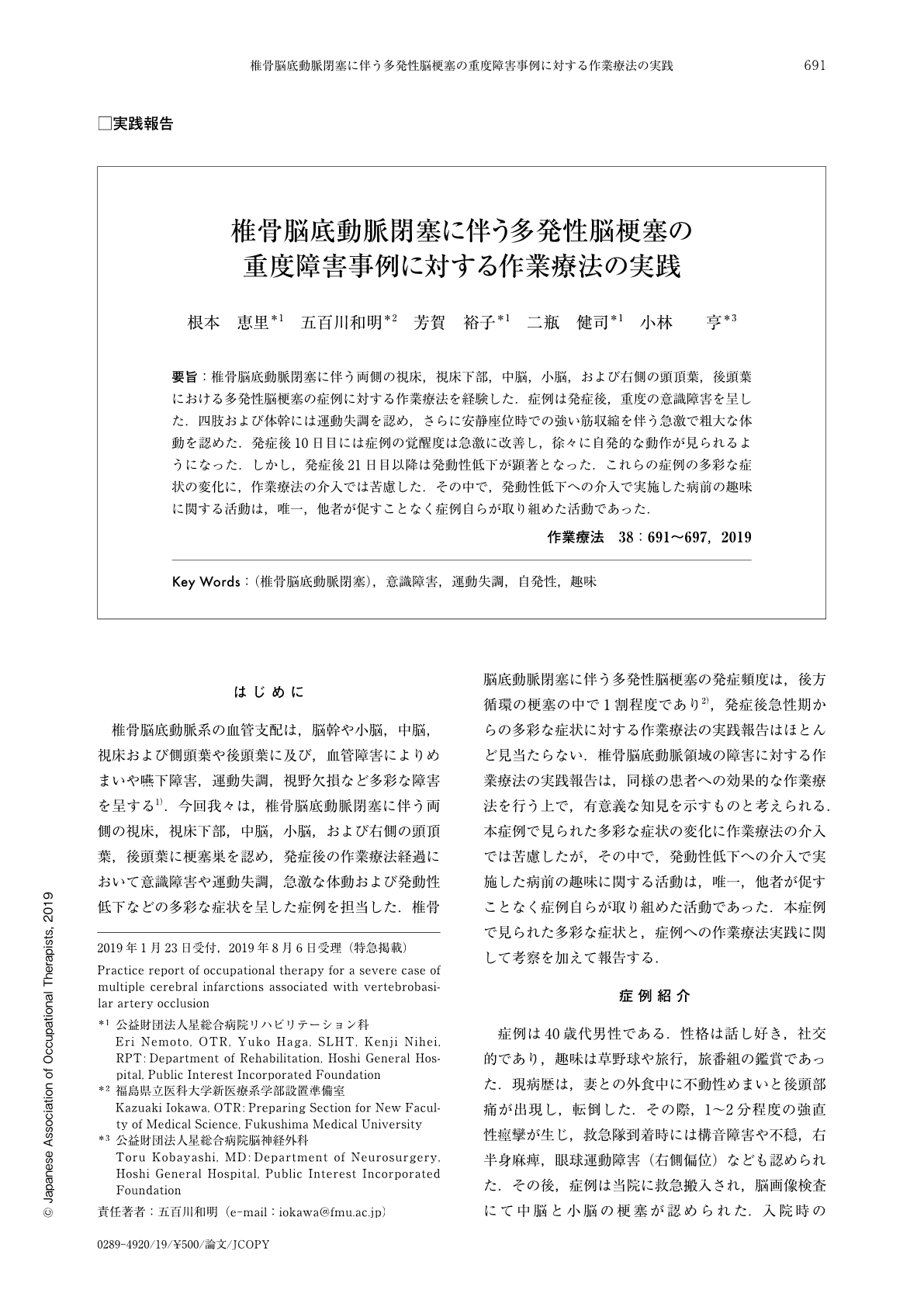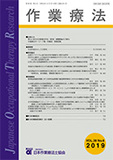Japanese
English
- 販売していません
- Abstract 文献概要
- 1ページ目 Look Inside
- 参考文献 Reference
要旨:椎骨脳底動脈閉塞に伴う両側の視床,視床下部,中脳,小脳,および右側の頭頂葉,後頭葉における多発性脳梗塞の症例に対する作業療法を経験した.症例は発症後,重度の意識障害を呈した.四肢および体幹には運動失調を認め,さらに安静座位時での強い筋収縮を伴う急激で粗大な体動を認めた.発症後10日目には症例の覚醒度は急激に改善し,徐々に自発的な動作が見られるようになった.しかし,発症後21日目以降は発動性低下が顕著となった.これらの症例の多彩な症状の変化に,作業療法の介入では苦慮した.その中で,発動性低下への介入で実施した病前の趣味に関する活動は,唯一,他者が促すことなく症例自らが取り組めた活動であった.
A patient with multiple cerebral infarctions along with vertebrobasilar artery occlusion involving the thalamus, hypothalamus, midbrain, and cerebellum on both sides and the parietal and occipital lobes on the right side received occupational therapy. The patient exhibited various symptoms, such as conscious disturbance, ataxia, and rapid body movements with strong muscle contractions in the sitting position at rest. Ten days after onset, the patient's alertness rapidly improved and spontaneous movements were gradually observed. However, 21 days after onset, the patient became apathetic. Occupational therapy interventions struggled to cope with changes in the patient's various symptoms mentioned above. Among the occupational therapy interventions, an activity related to the patient's hobby as an intervention for apathy was the only activity that the patient voluntarily performed.

Copyright © 2019, Japanese Association of Occupational Therapists. All rights reserved.


